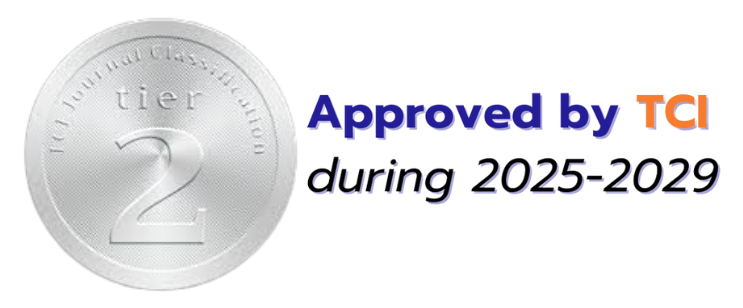การเปรียบเทียบผลสัมฤทธิ์ทางการเรียนวิทยาศาสตร์ เรื่อง ความร้อน และกระบวนการออกแบบเชิงวิศวกรรม โดยใช้การจัดการเรียนรู้ตามแนวคิดสะเต็มศึกษา ของนักเรียนชั้นมัธยมศึกษาปีที่ 1
The Comparison of Science Learning Achievement on Heat and Engineering Design Process Using STEM Education for Grade-7 Students
关键词:
ผลสัมฤทธิ์ทางการเรียน, สะเต็มศึกษา, กระบวนการออกแบบเชิงวิศวกรรม, Learning achievement, STEM education, Engineering design process摘要
การวิจัยครั้งนี้มีวัตถุประสงค์เพื่อ 1) เปรียบเทียบผลสัมฤทธิ์ทางการเรียนก่อนและหลังการเรียนวิทยาศาสตร์เรื่อง ความร้อน 2) เพื่อเปรียบเทียบกระบวนการออกแบบเชิงวิศวกรรมก่อนและหลังเรียน ของนักเรียนชั้นมัธยมศึกษาปีที่ 1 3) เพื่อศึกษาระดับพัฒนาการของกระบวนการออกแบบเชิงวิศวกรรม โดยใช้การจัดการเรียนรู้ตามแนวคิดสะเต็มศึกษาของนักเรียนชั้นมัธยมศึกษาปีที่ 1 และกลุ่มตัวอย่างที่ใช้ในการวิจัยเป็นนักเรียนชั้นมัธยมศึกษาปีที่1/6 โรงเรียนอู่ทอง ปีการศึกษา 2562 จำนวน 46 คนโดยใช้การเลือกแบบเจาะจง เครื่องมือที่ใช้ในงานวิจัย ได้แก่ 1) แผนการจัดการเรียนรู้ทางวิทยาศาสตร์ เรื่องความร้อน 2) แบบทดสอบวัดผลสัมฤทธิ์ทางการเรียนวิทยาศาสตร์เรื่องความร้อน และ 3) แบบวัดกระบวนการออกแบบเชิงวิศวกรรม รูปแบบที่ใช้วิจัย คือ วิจัยประเภทการวิจัยเชิงกึ่งทดลอง (Quasi-Experimental Design) แบบกลุ่มเดียวและมีการทดสอบก่อนและหลังการทดลอง
ผลการวิจัยพบว่า 1) ผลสัมฤทธิ์ทางการเรียนวิทยาศาสตร์ เรื่อง ความร้อน ของนักเรียนหลังเรียน มีค่าเฉลี่ยสูงกว่าก่อนเรียนอย่างมีนัยสำคัญทางสถิติที่ระดับ .05 2) คะแนนเฉลี่ยกระบวนการออกแบบเชิงวิศวกรรมของนักเรียนหลังเรียนมีค่าเฉลี่ยสูงกว่าก่อนเรียนอย่างมีนัยสำคัญทางสถิติที่ระดับ .05 และ 3) นักเรียนมีระดับพัฒนาการด้านกระบวนการออกแบบเชิงวิศวกรรมระดับสูงขึ้นไปมีทั้งหมดร้อยละ 88.64 โดยมีระดับพัฒนาการระดับสูงมากจํานวน 25 คน (ร้อยละ 56.82) มีพัฒนาการระดับสูงจํานวน 14 คน (ร้อยละ 31.82) พัฒนาการระดับกลางจํานวน 5 คน (ร้อยละ 11.36) และไม่มีนักเรียนคนใดที่มีพัฒนาการระดับต้น
The purposes of this research were 1) to compare learning achievement on heat lesson, 2) to compare engineering design process before and after learning, and 3) to study the students’ level of engineering design process using STEM Education for grade-7 students. The sample group consisted of 46 grade-7 students in Utong School of the 2018 academic year, who were selected through a purposive sampling. The research instruments composed of lesson plans, a test of learning achievement on heat lesson, and a test of engineering design process. The study followed the One-Group Pretest-Posttest research procedure for data collection. The research findings were 1) the learning achievement in science on heat lesson using STEM education for grade-7 students’ post-test score was higher than pre-test with significant level 0.05., 2) the students’ engineering design process achievement after learning was higher than before learning at the significant level of 0.05., and 3) 88.64% of students’ were the high above level of engineering design process, in which the highest level consisted of 25 (56.82%), high level consisted of 14 (31.82%), medium level consisted of 5 (11.36%) and there is no student at beginner level.







